How To Kill Insects In Garden
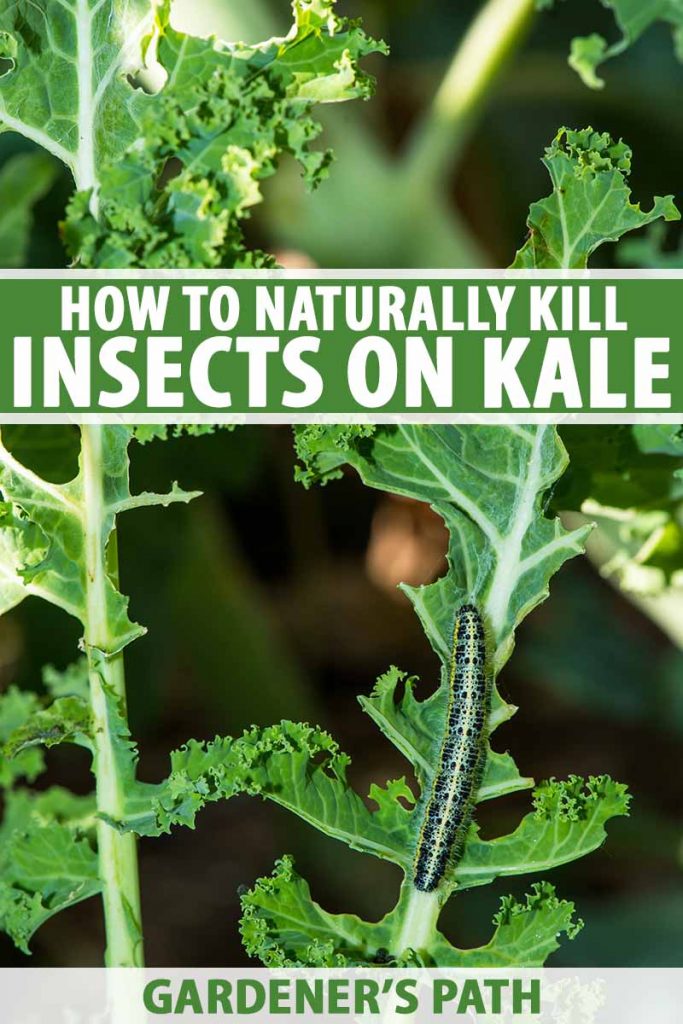
When insects attack your kale plants, you'll want to fight back. Fortunately, there are natural ways to kill the many different insect pests that plague these greens.
Once I've planted my kale and watched the leaves grow, I'm not exactly thrilled to see big chewed holes or lots of little bites. But I realize this is just a part of gardening.
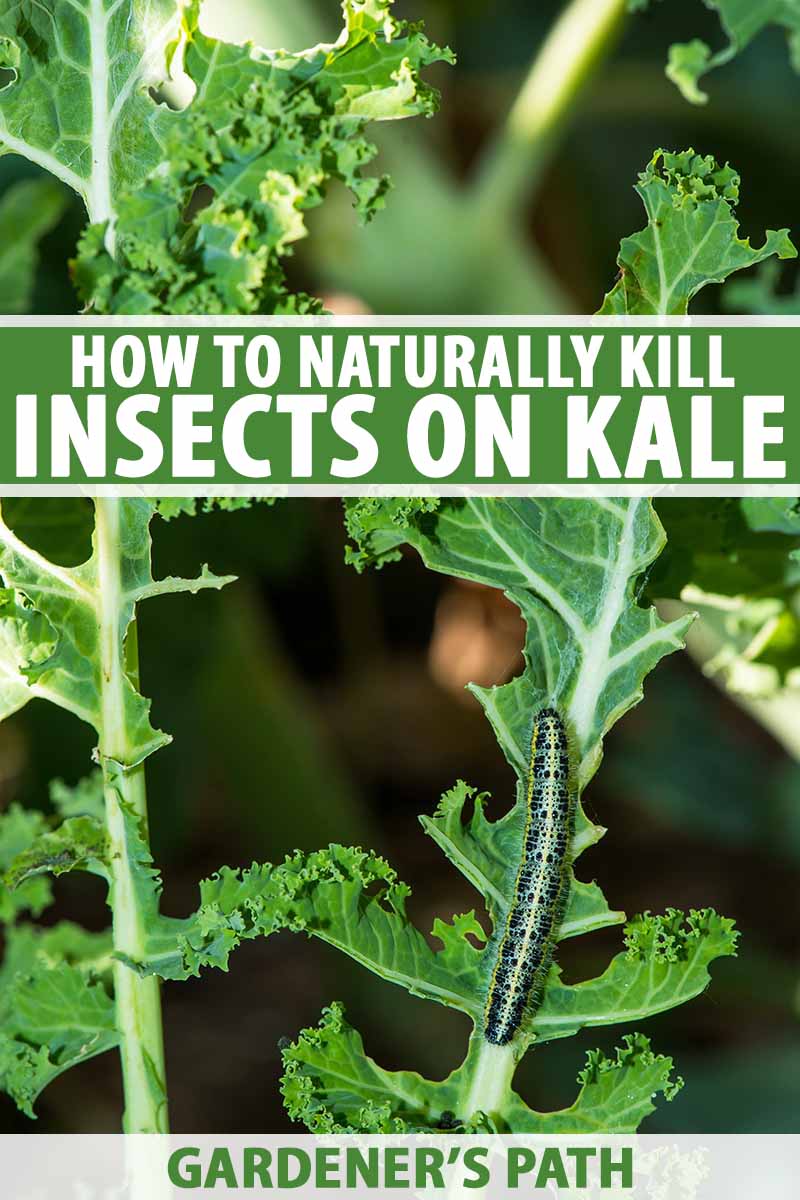
We link to vendors to help you find relevant products. If you buy from one of our links, we may earn a commission .
The first thing to do when you spot insect damage on your kale is to identify the pest that's causing it. Even if you don't see the bug itself, the type of bites on the leaves can serve as clues.
Common Kale Pests and How to Control Them
- Aphids (Aphididae Family)
- Flea Beetles (Chrysomelidae Family)
- Harlequin Bug (Murgantia histrionica)
- Imported Cabbage worm (Pieris rapae)
- Keeping Your Kale Plants Pest Free
Continue reading to learn more about pest identification and control.
Aphids are a family of small insects with soft bodies and sucking mouthparts. Large groups of aphids often appear on kale plants, causing a fuzzy or spotted appearance.
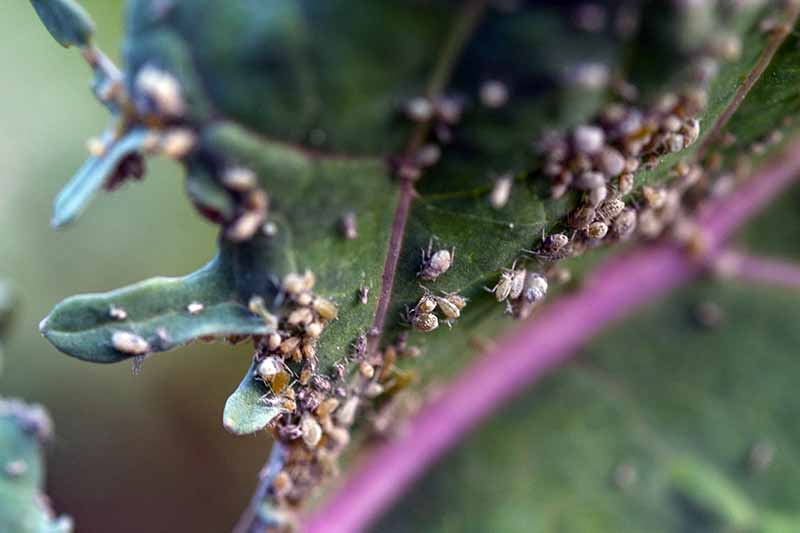
The bugs themselves suck the juices out of the plant, which can lead to discolored leaves. Aphids also produce a sticky substance called honeydew, which can cause the growth of fungus.
If there are just a few aphids on your plants, you can spray them off with a hose, or remove them by hand. Remove and discard leaves infested with or damaged by aphids. You can place these in your compost pile.
If you have a large infestation of aphids, one option is to release ladybugs. These beneficial insects eat up aphids in great numbers. However, you'll need to release a large number of ladybugs for effective control.
Be sure to look for ones that have been raised in captivity rather than ladybugs collected from the wild and shipped elsewhere.
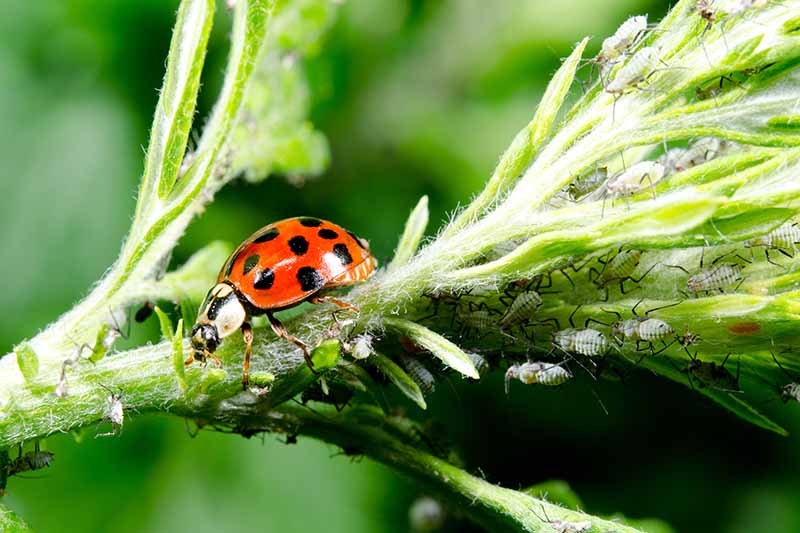
Another helpful insect in the fight against aphids is the parasitic wasp Aphelinus abdominalis. This wasp doesn't just eat the pests, it lays its eggs in living aphids.
When the eggs hatch into larvae, the aphids die and turn into a dry shell known as a mummy. Once they mature, the adult parasitic wasp chews a hole in the mummy and emerges – ready to do battle with more aphids!
A. abdominalis can be introduced to your garden when they are in the larval stage – inside the mummy. You can buy 250 of these hungry beneficial insects from Arbico Organics, and watch them destroy your aphid population!
Since aphids have soft bodies, they can be controlled effectively by spraying with neem oil. Neem oil is made from the seeds of the neem tree.
To use neem oil, dilute it according to product instructions, and spray it on your kale plants. It is best to reapply neem oil every seven days. While you can use it up to the day you harvest, you don't want to ingest it directly. It's worth noting that neem oil can be toxic to bees.
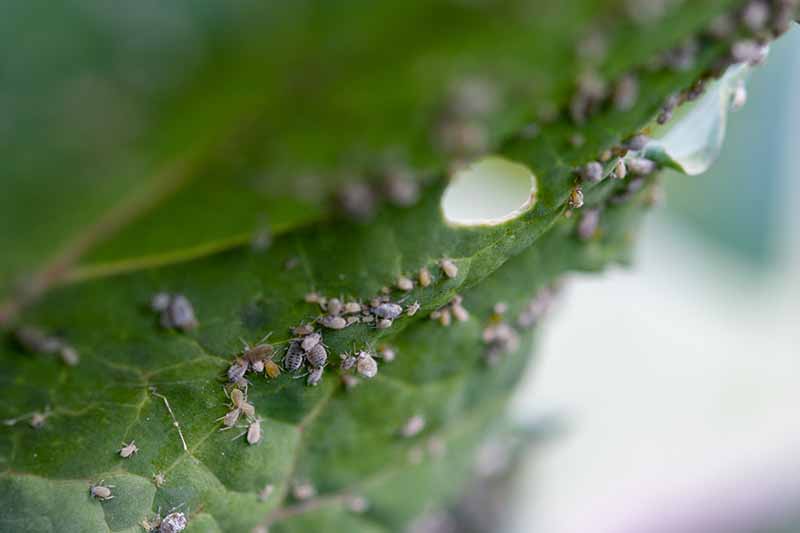
Insecticidal soaps can also be used to kill aphids. Check the label carefully to make sure it's suitable for edible crops and pay attention to how close to harvest you can safely spray.
The best time to apply insecticidal soap is in the morning or evening, when the temperatures are cooler. You should avoid spraying kale in sunny conditions, as this can burn the leaves and damage to your plants.
You can read more about aphid control here.
Flea Beetles (Chrysomelidae family)
These little beetles like to chomp on your kale, leaving tiny pits and holes in the leaves.
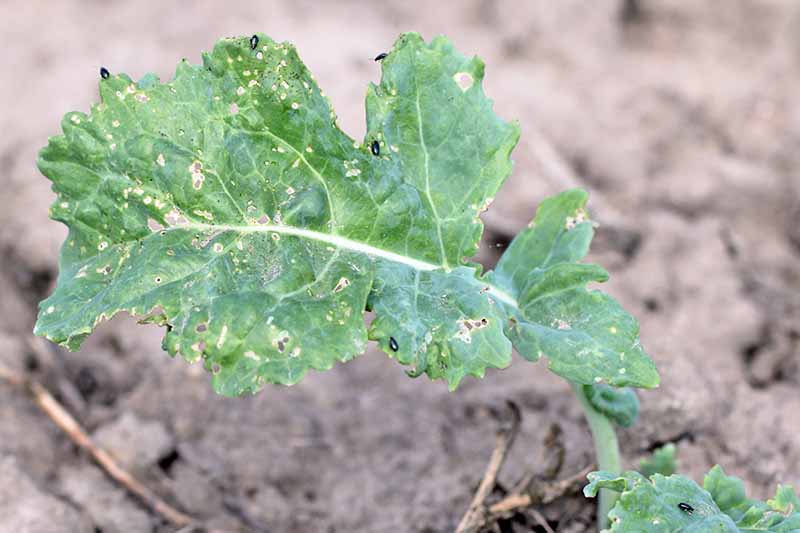
Although these beetles are small, they often arrive in large numbers, and can do a lot of damage.
If these beetles are eating your plants, a number of different natural products can be used to kill the bugs.
Diatomaceous earth (DE) is a powder made from fossilized remains of tiny organisms called diatoms.
This substance is sharp on a microscopic level, and damaging to the respiratory systems and mucous membranes of a variety of destructive insects such as flea beetles. But it is harmless to larger creatures such as humans and dogs.
Once you sprinkle DE on your plants, the flea beetles will die. Make sure you only use food grade DE near kale and other edible plants.
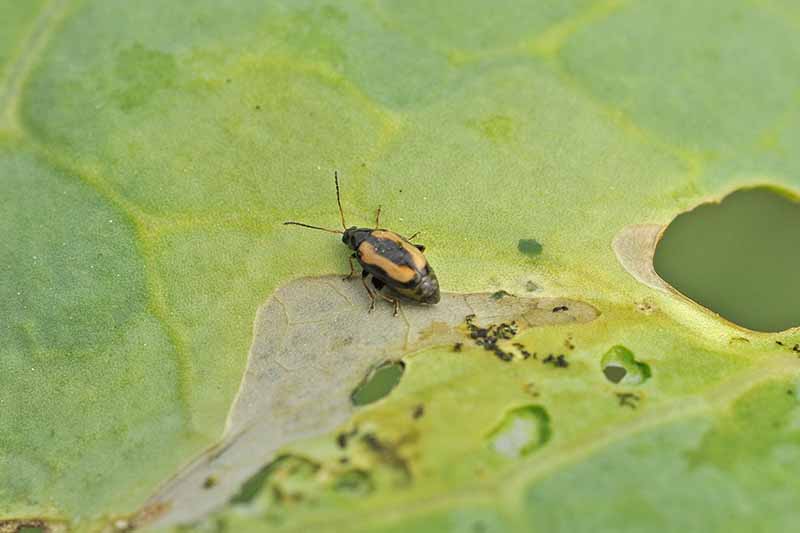
Pyrethrins are broad spectrum insecticides comprised of compounds derived from flowers in the Chrysanthemum genus. Products containing pyrethrins kill a variety of insects, including flea beetles.
To use, spray your product of choice on your kale plants, these compounds work by affecting insects' nervous systems, and products quickly kill pests.
Another natural insecticide that kills beetles is spinosad. This compound is derived from soil-dwelling bacteria.
It can kill pests on contact, but it is more effective when ingested. After you spray your plants with spinosad, flea beetles will die within two days.
Neem oil another option that may be used to treat flea beetles.
Harlequin Bug (Murgantia histrionica)
Harlequin bugs are shield shaped, with either black and red or black and yellow markings. They lay their black and white eggs in bands of six on the undersides of leaves.
These bugs have sucking mouthparts that they use to drink the sap from leaves. This results in white spots known as stipples. If an infestation becomes large enough, plants can turn brown and wilt.
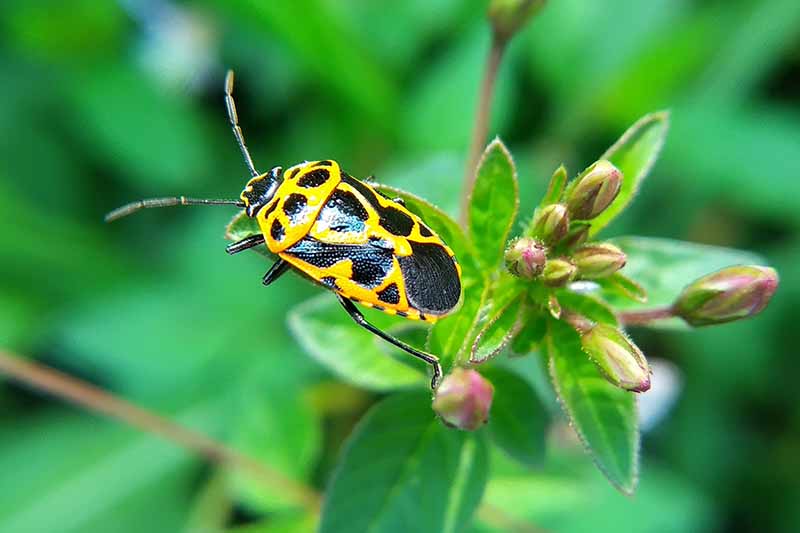
Small numbers of the bugs can be controlled by picking off adults and eggs, and placing them in soapy water.
Harlequin bugs can also be controlled with sprays of neem oil, pyrethrin, or spinosad.
Insecticidal soaps can be used to help control harlequin bugs as well. They don't actually kill the bugs, but they can soften their shells so other insecticides will become more effective.
Imported Cabbage worm (Pieris rapae)
The imported cabbage worm is the juvenile stage of a small white butterfly sometimes called a cabbage white. These green caterpillars can quickly devour kale leaves if they're not properly controlled.
Signs of cabbage worms include large bite marks or edges of the plants missing. Other signs include round green frass, or feces – these things eat a lot, and it shows!
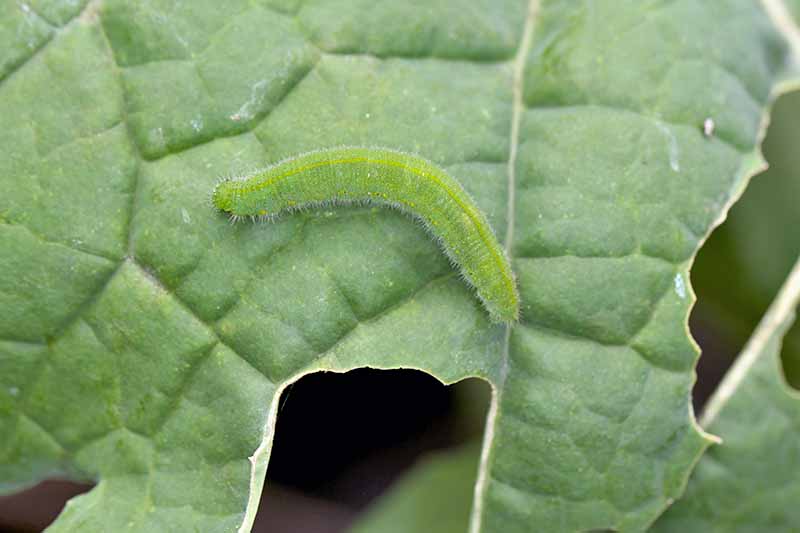
If you notice these worms, one way to control them is to physically remove them from your plants. Simply pick off the worms and egg masses, and place them in a container filled with soapy water.
Another control method is to use the bacterial insecticide Bacillus thuringiensis kurstaki (Btk). After you spray this bacteria on your plants, the insects will ingest the product and die. A variety of Btk products are available from Arbico Organics.
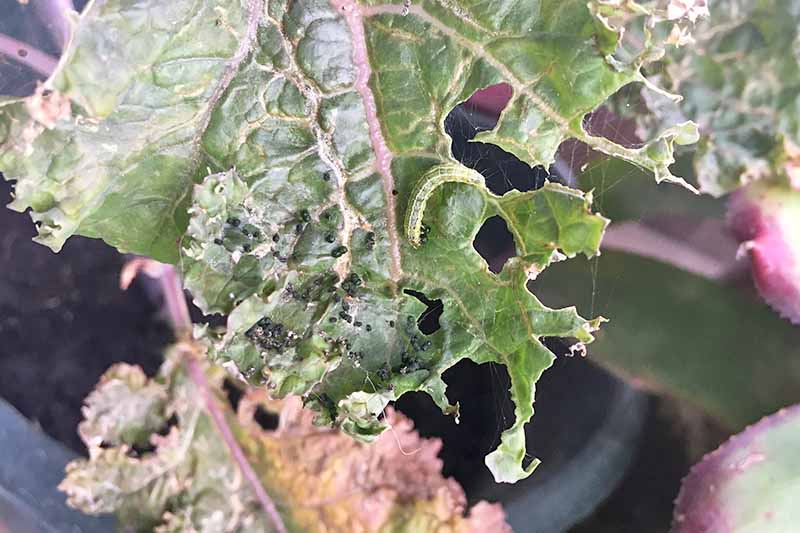
Crops can usually be harvested the day after application, but remember to always check the label if you spray edible plants with this product.
Keeping Your Kale Plants Pest Free
Chances are, your plants will be attacked by some type of bug at some point in their life. Fortunately for you, now you know how to naturally kill some of these major pests!
Let us know in the comments if you are having trouble controlling pests on your leafy greens, and what methods you use to deal with them.
For more information about planting, growing, and harvesting kale, try these suggestions for further reading:
- What Causes Yellowing and Thinning of Kale Leaves
- How to Keep Kale from Wilting in the Garden
- 6 Best Types of Kale for Cold Climates
Ask the Experts, LLC. ALL RIGHTS RESERVED. See our TOS for more details. Uncredited photos: Shutterstock. Additional writing and editing by Clare Groom and Allison Sidhu.

About Briana Yablonski
Briana Yablonski grew up in Eastern Pennsylvania and currently resides in Knoxville, Tennessee. She holds a Bachelor of Science degree in plant sciences and has worked on farms in Minnesota, Pennsylvania, Virginia, and Tennessee. Now, she spends many hours planting seeds and moving compost at her market garden. When she's not immersed in the world of gardening, Briana enjoys walking dogs at the local shelter and riding her bike. She believes that gardening fosters curiosity, continuous learning, and wonder.
How To Kill Insects In Garden
Source: https://gardenerspath.com/how-to/disease-and-pests/kill-kale-pests-naturally/
Posted by: alemanmility.blogspot.com

0 Response to "How To Kill Insects In Garden"
Post a Comment